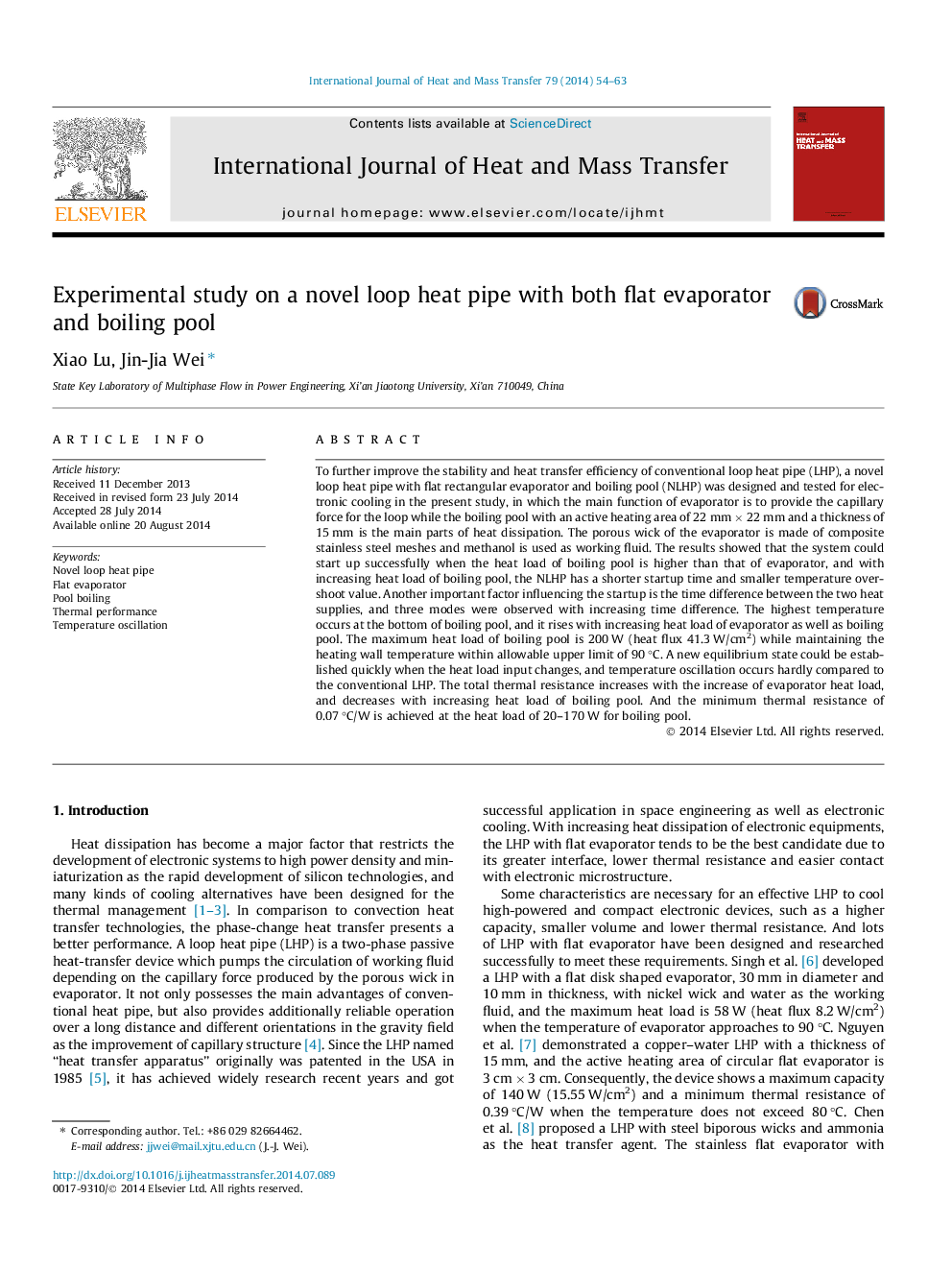| Article ID | Journal | Published Year | Pages | File Type |
|---|---|---|---|---|
| 657386 | International Journal of Heat and Mass Transfer | 2014 | 10 Pages |
To further improve the stability and heat transfer efficiency of conventional loop heat pipe (LHP), a novel loop heat pipe with flat rectangular evaporator and boiling pool (NLHP) was designed and tested for electronic cooling in the present study, in which the main function of evaporator is to provide the capillary force for the loop while the boiling pool with an active heating area of 22 mm × 22 mm and a thickness of 15 mm is the main parts of heat dissipation. The porous wick of the evaporator is made of composite stainless steel meshes and methanol is used as working fluid. The results showed that the system could start up successfully when the heat load of boiling pool is higher than that of evaporator, and with increasing heat load of boiling pool, the NLHP has a shorter startup time and smaller temperature overshoot value. Another important factor influencing the startup is the time difference between the two heat supplies, and three modes were observed with increasing time difference. The highest temperature occurs at the bottom of boiling pool, and it rises with increasing heat load of evaporator as well as boiling pool. The maximum heat load of boiling pool is 200 W (heat flux 41.3 W/cm2) while maintaining the heating wall temperature within allowable upper limit of 90 °C. A new equilibrium state could be established quickly when the heat load input changes, and temperature oscillation occurs hardly compared to the conventional LHP. The total thermal resistance increases with the increase of evaporator heat load, and decreases with increasing heat load of boiling pool. And the minimum thermal resistance of 0.07 °C/W is achieved at the heat load of 20–170 W for boiling pool.
